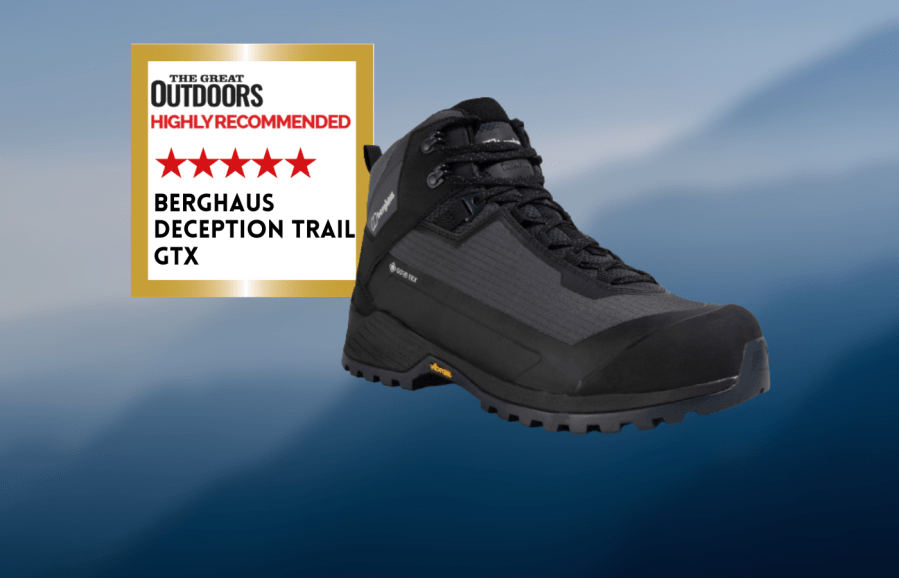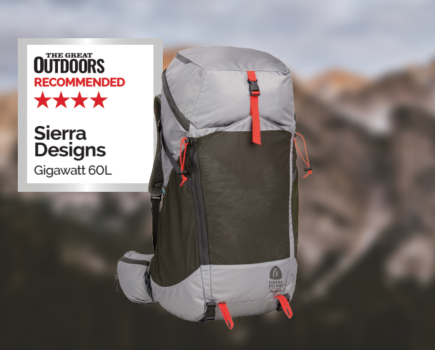The Berghaus Deception Trail GTX hiking boot is a mid-cut, yet ever-so-slightly deeper in the ankle than your average mid; I found that matter of just a half-centimetre or so made a welcome difference: the cuff closed snugly and supportively around my ankle and, accordingly, the boot felt that bit more substantial, a robustness that offered a sense of security, and inspired confidence on the fell.
John Manning Highly Recommends
The Berghaus Deception Trail GTX hiking boot is a mid-cut, yet ever-so-slightly deeper in the ankle than your average mid; I found that matter of just a half-centimetre or so made a welcome difference- Price
- Comfort
- Weight
- double-hook lacing system
- Traction
- Deep Instep
- None
| Quick specs | |
|---|---|
| Price: £170 Weight: 1023g (stated, men’s size 9/EU43); 1,119g (on JM’s scales, men’s size 10.5/EU45) Eco/ethical claims: 100% synthetic boot; Repairhaus service; sustainability report; member of the Sustainable Apparel Coalition, B Corp, and the global Ethical Trading Initiative; annual open and transparent Positive Business Report on actions & initiatives Materials: polyester upper; Gore-Tex membrane; Opti-Stud Vibram rubber outsole Features: mid-cut; Ortholite footbed; no animal-based materials Sizes: UK 7–12 (including half sizes)/EU 40.5–47 Women/men’s version: both URL: www.berghaus.com |
The Berghaus Deception Trail GTX sole has only a slight lateral flex, making it reasonably spikes-friendly-stiff and just sufficient to help propel you along without dictating foot placement. Pleasingly, the sole’s welcome semi-rigidity hasn’t yet softened off (as many do) after initial weeks of wear.
There’s a protective rubber bumper at the front of the boot which would, had my toes projected that far forward, doubtless have protected my toes from clumsy trailside rock: but these are long boots and those stopped short in the roomy toe box, so I’ve experienced no toe bashing or bruising, even on steep descents. There’s also a light rubber rand around the outside edge of each boot.
Ankle support, as implied, is excellent. A synthetic cup supports the heel while the substantial collar holds the ankle without being over-restrictive. While a little stiffness in the collar wore off after a few days’ wear, I couldn’t initially shake off some inner heel rub on my left (larger) foot. I was able to rectify that thanks to the simple lacing system, comprised of four pairs of loops feeding up to two pairs of hooks: by lacing directly to the upper hooks from the loops, then back down to the lower hooks, any rubbing was easily and effectively relieved. The laces themselves are 5mm fabric flatties, which I find fasten more securely and are longer lived than round cord laces.
The sole provided reliable traction on a variety of terrains; the reasonable instep is a feature which I believe aids braking on crumbly descents.
So, substantial, supportive, roomy, rigid … yet this was the lightest boot among the test group and by far one of the most comfortable.
Reviewed and tested by John Manning
John has medium-to-broad UK10.5 (EU45) feet; his left foot is marginally larger. He tested the boots on varied terrain, from limestone and gritstone Pennine fells to steep vegetated slopes, muddy field paths and pathless Pennine moors. The footwear was weighed at home on his kitchen scales.








